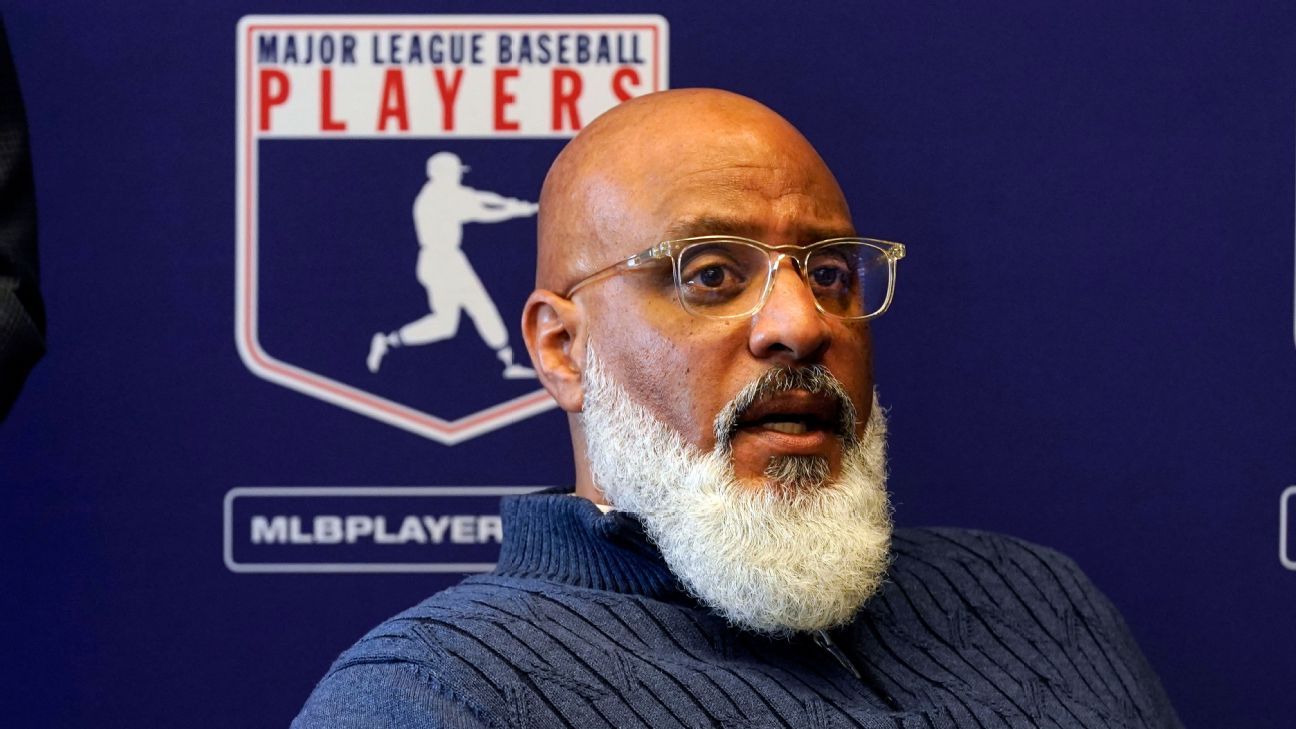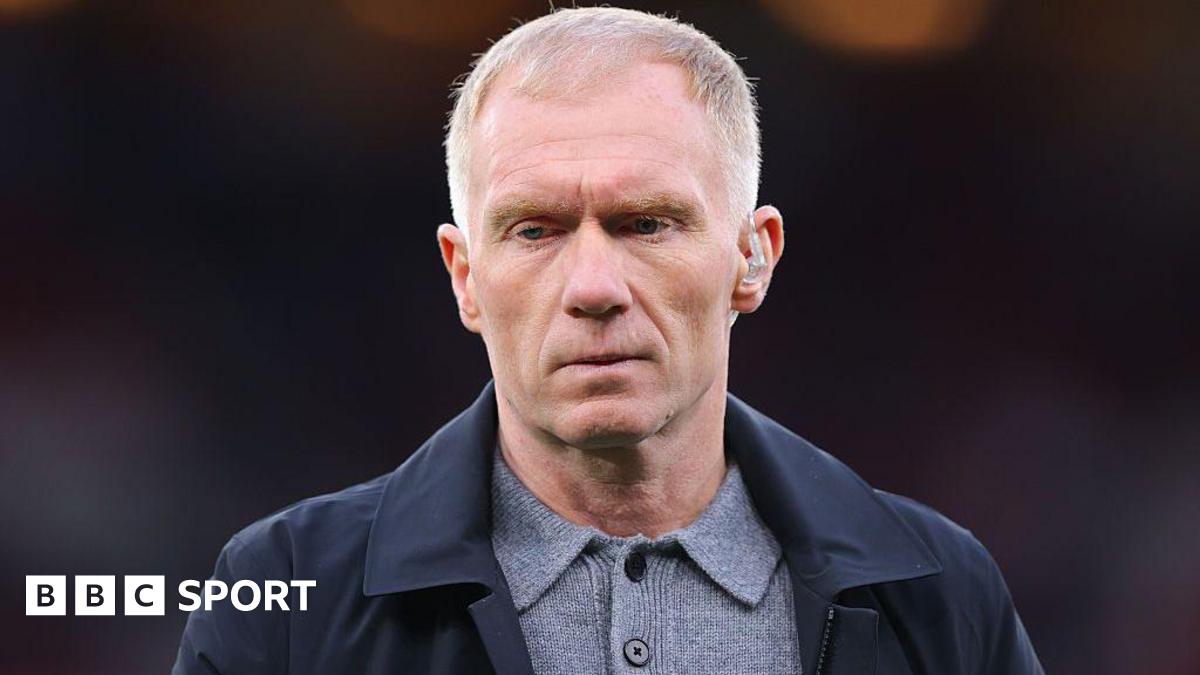Everyone Is Going Long Against Liverpool, and It's Working

Liverpool have lost four league games in a row for the first time since February 2021, and a trend has been present all season. But can the Premier League champions learn how to deal with long balls?Arne Slot was at pains to emphasise it was not a criticism.There’s an unwritten rule in football that if someone accuses your team of playing directly, especially deciding to hit a lot of long balls, that you must take it as a personal affront. But the Liverpool boss was merely pointing out something that was quite clearly true.Teams are playing the long-ball game against the Premier League champions this season, and in the last four matches at least, it has worked an absolute treat for them.It was something Slot brought attention to after Liverpool’s 2-1 home defeat to Manchester United, saying post-match: “If you play United, with so many quality players they have… and if they come to us in a low block, playing so many long balls, then the last thing you want is going 1-0 down, because that gives them even more belief.”Sure enough, it was taken as a ‘snipe’ by some, despite the fact 75 of United’s 294 passes at Anfield were long (at least 32 metres in length, excluding throw-ins, goalkeeper throws and crosses). At 25.5%, it was their greatest long-ball proportion in a Premier League match since December 2017 vs Arsenal (27.9%).In fact, ahead of Matchday 10, Ruben Amorim’s side have attempted more long balls than any other team in the Premier League in 2025-26 (522).It was far from the only game in which Liverpool have experienced such a bombardment, though.In total, the Reds have faced 571 long passes in the Premier League this season, at least 46 more than any other team, while Bournemouth (525) are the only other side to have even faced 500+.Those 571 long passes account for 20.5% of their total passes against, which is also the greatest proportion faced by any side in the division in 2025-26.On an individual game basis, the three highest long-ball totals this season have all come against Liverpool – 75 vs Man Utd, 71 vs Crystal Palace and 70 vs Bournemouth. On top of that, the 67 they faced against Chelsea is the joint-seventh most, while the 64 they faced at Brentford on Sunday is joint 11th.Following their 3-2 defeat to the Bees, Slot said: “It is definitely that teams have a certain playing style against us; it is a very good strategy to play. We have not found an answer yet.”He will need to find an answer soon, though, because it’s clear this is something opposition managers are aware of. Liverpool started the season with five wins in the league, but none of them were particularly convincing, with the Reds often needing late goals to earn victory. The needle moved the other way after that, and they’ve now lost four in a row for the first time since February 2021.The fine margins are there to see. Liverpool have not drawn a single game this season, but only one of their nine league games has been won by more than one goal (their opening-day success against Bournemouth). Even that only finished 4-2 because of a late strike from Mohamed Salah that largely owed to the Cherries being stunned by Federico Chiesa’s 88th-minute goal to make it 3-2 at Anfield.Their next four victories against Newcastle, Arsenal, Burnley and Everton were all by a single goal, as were their subsequent four losses to Palace, Chelsea, United and Brentford. It goes to show how fine the margins are. This run has seen them go from five points ahead of Arsenal at the top of the table to seven points adrift of them.Across the Premier League, there were an average of 93.4 long balls per game last season. That has gone up to 99.5 (49.8 per team) this season, though is not necessarily a sign of a changing trend, as the average per game in 2023-24 was 101.3.The opposition to play the fewest long balls against Liverpool in the league this season were Arsenal (50), meaning all nine of their opponents have attempted an above-average number of long balls when facing the Reds in 2025-26.By comparison, Aston Villa, Burnley, Leeds, Nottingham Forest and West Ham have only faced 50+ long passes on nine occasions between them this season.Liverpool are not being dominated in the air, though. They have contested 317 aerial duels this season in the Premier League, winning 179 of them (56.5%). Only Everton have won more (191 of 352 – 54.3%) while only Manchester City have won a higher percentage (58.4% – 129 of 221).Virgil van Dijk has won at least seven more aerial duels than any other player in the Premier League this season (46 of 59 – 78%), while his centre-back partner Ibrahima Konaté has won the third most (35 of 50 – 70%).It’s second balls where Liverpool are often falling short, failing to mop up after their centre-backs have dealt with the initial danger.It’s not that long balls always directly lead to chances for their opponents – no team have recorded more than 29 successful long balls against Liverpool in the Premier League this season. But it helps to briefly force them out of their shape, and it seems they are struggling to cope when that happens, especially with a new left-back in Milos Kerkez, and an unstable rotation of right-backs on the other side.Liverpool aren’t the only team being targeted, though.Bournemouth have also faced 50+ long balls in every Premier League game this season but are coping with it far better than Liverpool at the moment. Andoni Iraola’s men have made the second-most high turnovers (71) in the league behind only Brighton (76) and have allowed the lowest PPDA (opposition passes per defensive action) of all Premier League teams (9.8) this season. Their press is clearly still working, despite their opponents’ best efforts to play over it.The same cannot be said for Liverpool, who are fifth for PPDA (10.6) and have only made 54 high turnovers – half the league has made more.By comparison, leaders Arsenal have faced over 50 long balls in just five of their nine league games, including in their 1-0 win over Crystal Palace on Sunday (63). However, only 19 of the Eagles’ long balls were successful, with Arsenal largely dealing well with them. The most they’ve faced was in their 1-0 win at Manchester United on the opening weekend (67), of which 41 were successful in a game that was arguably the most flustered Mikel Arteta’s side have looked all season. That remains the most long balls completed by a team in a Premier League game in 2025-26.Back to Liverpool, this is not an entirely a new thing for them. In Jürgen Klopp’s final season as manager in 2023-24, the Reds faced at least 50 long balls in 28 of their 38 Premier League games. Everton were the only team to face 50+ in as many games (28).Slot began his time in England last season with wins against Ipswich Town, Brentford and Man Utd, but in his fourth game at home to Nottingham Forest, there was a different test. The visitors attempted 64 long passes, at least 17 more than Liverpool had faced in the previous three games, and it perhaps played a part in Forest’s shock 1-0 win at Anfield.The Reds also faced 58 long balls at Palace a few weeks later, which was a hard-fought 1-0 win, but those were the only two times in their first 16 league games of 2024-25 they faced 50+ long passes. After that, they faced 50+ long passes nine times in their remaining 22 games.Liverpool didn’t always struggle against it – winning six of the 13 games they faced 50+ long balls in last season – but they certainly seemed to find it easier when teams didn’t go down that route. Prior to clinching the title in April, Liverpool only dropped points in three of the 22 games in which the opposition attempted fewer than 50 long balls, which were draws away to Arsenal, Newcastle United and Villa, all tricky games regardless of styles.It is therefore little surprise that, nine games in, Liverpool are yet to face anyone in the league this season who haven’t frequently gone long.Even in the Champions League, they faced 54 long balls in their late 3-2 win over Atlético Madrid, and 63 in their 1-0 loss at Galatasaray.It probably isn’t a coincidence that the game in which Liverpool have faced the fewest long balls this season was their recent 5-1 Champions League victory at Eintracht Frankfurt (38), easily their best performance and most comfortable win of the campaign to date.If you’re looking for a reason why teams have gone down this route, it likely has something to do with high turnovers. Last season, Bournemouth (68) and Liverpool (60) had the most shots from high turnovers in the Premier League, and along with Nottingham Forest, scored the most goals from them (10).This season, Bournemouth are fourth (14) and Liverpool joint sixth (10) for shot-ending high turnovers, though both are among the five teams to have scored twice from them. That Liverpool have scored the joint-most goals from high turnovers despite being in the bottom half for overall high turnovers is perhaps a sign of their potential threat from them, and why opponents are trying to nip them in the bud.And that bud nipping seems to be working. Liverpool averaged 8.1 high turnovers per game last season, but after nine games in 2025-26, that has dropped to 6.0.Teams don’t want to give Liverpool opportunities to press them and win the ball high, so they’re happily sending long balls forward to deny them while also either stretching the pitch or at least creating even more work for the Reds’ centre-backs, with second balls then there to be won.The aerial route has not only been successfully in open play against Liverpool, but from dead balls as well. Liverpool have conceded seven goals from set-pieces already in the Premier League this term; only Nottingham Forest and West Ham (both 10) have allowed more. The champions only let in 10 set-piece goals in the whole of 2024-25.Including one on Saturday, three of those set-piece goals against have come from throw-ins, more than anyone else in the Premier League. In the entirety of last season, Liverpool conceded just once from throws, though the fact there are significantly more long throws in England’s top flight this season is obviously a factor.They host Crystal Palace in the EFL Cup on Wednesday, but there is the potential for some respite next weekend when they face Aston Villa. They’ve attempted the second-fewest long balls in the Premier League this season (401), behind Man City (327), and only played 60 in total (34 at Anfield, 26 at Villa Park) against Liverpool in their two league meetings last season.It is possible that facing so many long balls is a big reason why it feels like they’re not in control of games the way they were so impressively last season as they strolled to the Premier League title, especially in those early matches when, as we’ve established, they didn’t face as many.After the loss at Brentford, vice-captain Andy Robertson identified the issues, saying: “You have to fight for the control. Nobody is going to just say, ‘On you go, you take the ball and we’ll try to defend.’ Nobody does that.“They always have a game plan against us. All the managers in the Premier League are so talented, especially teams that have had a full week to prepare. They would have had a clear game plan and you’d have to ask their manager, but I think [Brentford] played theirs perfectly – and we didn’t play ours at all. That makes it so difficult.“If you just think they’re going to show up and all of a sudden they’re going to drop off, we’re going to have control and we’ll just wait until we score – [that] never ever happens. This is my ninth season and I think it’s only happened once or twice.“If we expect that then we’re in big bother – you have to fight for that control, you have to fight first of all. You have to fight for the second balls, fight for the first balls and try to feel your way into the game. Then the quality will come through.”Slot accepts it’s his problem to solve. Liverpool showed on Saturday that they’re pretty far from doing so, but they must find solutions soon before the season gets away from them. Otherwise, passes against them won’t be the only things that feel long.



.jpg)








